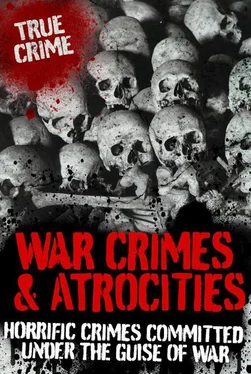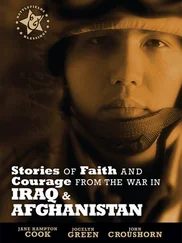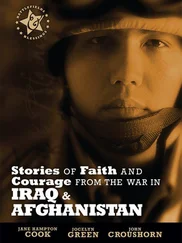These instances are only a small cross-section of the extensive range of war crimes committed by the Japanese armies during the Pacific War and also Japan’s brutal undeclared war against China.
GERM WARFARE
One of the most heinous acts of former officers of the Japanese army was the setting up of a top-secret germ warfare research centre, called Unit 731, in the desolate area on the Manchurian Peninsula. Using American, Chinese, Soviet, Korean, British and other prisoners of war as human guinea pigs, they deliberately infected them with the plague, anthrax, cholera and other pathogens. It is believed that as many as 200,000 people could have been affected by this form of experimentation before and during World War II.
The victims of these cruel experiments suffered indescribable misery and suffering; some were vivisected without the use of an anaesthetic, while others were tied to stakes and pounded with shrapnel laced with gangrene. After the victims became sick, they were cut open while still alive so that the doctors could chart the course of the infection. Others were put into pressure chambers to see how much they could stand before their eyes literally popped out of their sockets, or they were exposed to subzero weather conditions to find out how quickly they developed frostbite after being periodically drenched in water. Medical researchers also confined healthy prisoners with diseased ones to see how quickly the the disease would spread. The corpses were disposed of quickly in three large incinerators to destroy any evidence of mistreatment, especially as the majority were missing internal organs.
Away from the research centre, the Japanese army carried out long-range germ warfare field tests, as far away as Burma, Thailand and Indonesia. Planes dropped plague-infested fleas over China, which caused outbreaks of the disease killing at least 30,000 people in the Harbin area between 1946 and 1948. In 1942, germ warfare specialists distributed dysentery, cholera and typhoid bacteria in Zhejiang Province in China, but the operation backfired when many of the Japanese soldiers became ill, killing 1,700 of their own men.
The mastermind behind all this atrocity was General Shiro Ishii, a physician with a flair for sadism. He built up a unit of approximately 300 men, using special ‘cover-up’ identities. The site at Pingfan near Harbin, covered an area of 6 sq km (2.3 sq miles) and housed more than 150 buildings – administrative, laboratories, dormitories and barracks. It is alleged that by 1945, Unit 731 had stockpiled as much as 400 kg (882 lb) of anthrax that they planned to use in a specially designed defragmentation bomb. Inside Unit 731 were numerous jars containing specimens, such as feet, heads or internal organs, all neatly labelled.
Many of the human experiments were intended to develop new vaccines or treatments for problems that inflicted the men of the Japanese army. However, their methods of obtaining information were so scandalous that the whole operation was kept a closely guarded secret. When the war ended in 1945 and the Japanese surrendered, the specialists from Unit 731 destroyed war crime evidence and fled to Japan. The Soviet army took over the facilities, but it was to be many more months before they learned the truth about what had taken place there.
As soon as the USA occupied Japan, it started negotiations with known war criminals, offering them immunity from prosecution in return for their data, information and scientific skills. Although this was somewhat of a dilemma for the USA, they were concerned that the Soviet Union were far more advanced in their development of biological warfare and, despite the fact that the Japanese used horrific methods, they felt their knowledge would be invaluable to US military leaders.
After three years of talks, the USA offered General Shiro Ishii immunity and no other member of the now notorious Unit 731 was ever prosecuted as a war criminal. General Ishii lived in peace until his death from throat cancer in 1959. Other specialists from the unit saw their careers flourish in the postwar period, achieving high-ranking positions, including Governor of Tokyo, president of the Japan Medical Association and head of the Japan Olympic Committee.
More than five decades later, the subject of Japanese germ warfare – like many other atrocities related to World War II – remains an extremely sensitive issue.
THE DEATH MARCHES
Bataan
Not many prisoners of war ever returned to tell the tale of the inhumane treatment received at the hands of the Japanese army in the Philippines. The degradation, the brutal treatment, the torture and barbarism started when the Japanese invaded the Philippines in December 1941. The Japanese soon overpowered the sparsely distributed US and Filipino soldiers, forcing them to retreat to the Bataan Peninsula. Due to lack of supplies, General MacArthur had placed his men on half rations, so by the time the Japanese launched a second attack on 3 April, 1942, the US soldiers on the peninsula were so weakened by starvation and sickness they were unable to offer any effective resistance.
Commander of the US troops, Major General Edward King, decided to surrender his troops, but if he had known what lay ahead he would never have made this decision. Thousands of prisoners were herded together on the Mariveles Airfield at dawn on 10 April. Although some were in possession of meagre rations, they were not permitted to eat. All of their personal belongings were seized, and any prisoners carrying Japanese money or tokens were immediately beheaded.
Next came the ‘march of death’ when, in groups of 500 to 1,000 they started their terrible six-day ordeal along the road from Bataan towards San Fernando in the Pampanga province. Already in a weakened state from lack of nutrition and disease, the soldiers were forced to march without even the luxury of water. One soldier who was lucky enough to still have a canteen, had it seized by one of the Japanese soldiers, who taunted him by feeding the water to one of his own horses. The sun beat down on their uncovered heads and the prisoners staggered on through clouds of dust. On the roadside were the bodies of men who had been recently killed, many flattened by the Japanese trucks. Patients who had been forced to leave a field hospital were forced to march with the column, regardless of the severity of their injuries.
At night the men were put into enclosures that were too small to enable any of them to lie down, and they were still denied drinking water, except for the occasional dirty wallowing hole. This went on day after day. Any men that fell out of the column had to be left as no one was permitted to stop and help. These men were left to the mercy of the Japanese soldiers, who usually killed them on the spot.
On the third day of marching a new type of torture was introduced to further test the prisoners’ endurance. While the Japanese stopped for a rest and food, the prisoners were forced to sit in the boiling midday sun without any form of cover. Many of the men, who were already seriously dehydrated, just collapsed and died. The only luxury afforded to the prisoners was the odd handful of contaminated rice, which only added to their problems of diarrhoea and dysentery.
On the fourth day, crazy through the lack of water, six Filipino soldiers made a dash for one of the watering wells at the side of the road. They were immediately shot, gutted and hung over a barbed wire fence to act as a deterrent to any other prisoners who dared to break rank.
On the fifth day 115 prisoners were packed into a small narrow-gauge box car, with the doors closed and locked. It was impossible for anyone to move and by the morning the stench was unbearable. When the doors were opened the following morning, the occupants were subjected to another three hours sun treatment and then forced to march to Camp O’Donnell. Many of the prisoners made the 137 km (85 mile) journey without any food or water whatsoever, and prisoners taken at Corregidor fared little better. Although they were not made to march, around 7,000 US and 5,000 Filipino soldiers were packed for a week with no food on a small concrete area. There was only one water point for all the men and the average wait to fill a canteen was 12 hours.
Читать дальше












